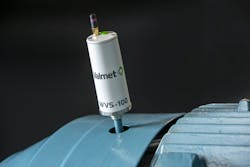Optimizing maintenance and production in board and paper mills: Beyond condition monitoring
Financial losses due to unplanned downtime, reactive maintenance and paper quality issues can vary depending on mill production capacity and the product being manufactured. For those responsible for ensuring production and financial targets are met, we need not look to far into the balance sheet to see the effect on annual revenue. Not to mention the indirect cost of increased customer complaints, safety incidents and cost of carrying unnecessary equipment spares.
Consequently, plant executives and operations and maintenance managers are increasingly seeking help to maximize the availability of production equipment and maintenance efficiency while still meeting stringent quality requirements. Historically, production and maintenance strategy and improvement initiatives have been approached separately with limited coordination between functional teams. However, the reality is that maintenance and operations are inextricably connected. How production equipment is operated directly impacts its maintenance needs and conversely how equipment is maintained impacts production capacity and product quality.
However, some industry experts are now espousing a more holistic approach, one in which machine and process condition monitoring is integrated and includes vibration analysis, lubricant monitoring, process parameters, quality control system data and any data that may be available in the distributed control (DCS) and quality control systems (QCS) to provide a complete picture of machine health. By integrating mechanical and process condition data, faults are detected before they become functional failures, thus allowing for time to schedule corrective maintenance and avoid unplanned downtime or paper quality losses. For example, if a defect in a roll cover is causing moisture variability in the sheet operations and maintenance is able to make that causal connection quickly and accurately.
“Our goal is to give paper makers the tools required to solve board and paper machine problems by providing a complete picture of machine and process health. Company leaders care about the performance of the entire mill, not any given component, per se. A holistic approach provides the mill with the tools they will need to make the decisions they need to make to keep the paper or board mill online and running,” says Matthew Boudreau, Valmet condition monitoring solution manager, ISO Category 3 Vibration Analyst and ICML Level II Machinery Lubricant Analyst with over a decade of experience in condition monitoring and reliability.
The company he works for, Valmet, is a global leader in process technologies, automation and services, offering a comprehensive range of process optimization and condition monitoring products and services. These products and services are designed to enhance the reliability, efficiency and performance of equipment and processes at the plant and corporation-wide level.
In this Q&A, Processing is discussing the benefits of targeted, condition-based, predictive monitoring with Boudreau and his colleague at Valmet, Kyle Hester, who is a condition monitoring specialist and a CAT III Vibration Analyst with over 10 years of tissue machine experience, as well as training and expertise with lube analysis, ultrasound, thermography, operating deflection shape (ODS) analysis and 3D modeling.
Together, they answer our questions about how pulp, board and paper producers can optimize mill production and the reliability of their equipment.
Q: Let’s start with the basics. What is the purpose of condition monitoring?
Matthew Boudreau: Condition monitoring is a maintenance strategy which aims to detect faults before they become functional failures. By identifying issues early, corrective action can be taken to avoid unplanned downtime, catastrophic failures and product quality losses. The primary goal of condition monitoring is to maintain the function of the monitored asset, with failure defined as the asset no longer meeting the process requirements. It is important to note that condition monitoring is not limited to vibration analysis of rotating mechanical assets; it can also be applied to other process-critical assets, such as control valves, instrumentation and lubricants, for example. By integrating the condition monitoring of various assets and considering the effects of process conditions on components and vice versa, we obtain better data and enhanced visibility, leading to faster and more actionable decision-making.
Q: What are some of the benefits of comprehensive condition monitoring?
Kyle Hester: A key benefit of having comprehensive condition monitoring is that you see the bigger picture. Paper process equipment can be incredibly complex and made up of many machines working together. If we focus on any one specific mechanical component, we miss seeing the component as part of an interconnected system and how the operation of that system has an effect on the component. When your condition monitoring system is a standalone system, as most are, you will not see the big picture. With Valmet DNA Machine Monitoring you can see how one system affects another. In the paper-making industry for example, you can compare water pressure pulsations to roll vibration. You can trend lube information to vibration. There really is no limit when the condition monitoring system is built into a platform that shares data and analysis tools with the distributed control, quality control and process optimization systems like Valmet DNA does.
Q: Any other benefits?
KH: By reducing reactive maintenance, we can reduce the number of onsite spare parts required. We can also optimize spare storage though common stores that supply multiple plants, but there are savings that are not as easily noticed. One of those ways is preventing ancillary damage. Take, for example, a larger blower that runs to failure. When this blower fails, it is very likely the motor will be damaged or destroyed as well. This piece of the puzzle is often overlooked in terms of return on investment of condition monitoring programs because the machines are usually repaired before catastrophic failure leads to ancillary damage. Although hidden by effective condition monitoring, it becomes a very costly problem without condition monitoring.
I would like to mention one more very important benefit that might surprise you. Condition monitoring makes work much safer. If we are performing reactive maintenance, that work is inherently not planned, and maintenance is rushed so that the plant can come back up and run as soon as possible. Think about the times you may have been injured at work or at home, chances are you were distracted or trying to rush, maybe using the wrong tool for the job because that is all you had at the time. I have worked both planned and unplanned downtime for many years, and planned downtime is always safer, more efficient and yields better repair/rebuild results.
Q: What are the limitations of condition monitoring?
MB: Most condition monitoring systems focus on the mechanical health of components such as bearings and gearboxes using vibration analysis. Sometimes, additional condition monitoring data, such as lubricant analysis, is collected as well, but is often not used in conjunction with vibration data. What we have learned here at Valmet in the over 30 years we have been in the condition monitoring space is that these data islands are problematic and the impact of the paper-making process on mechanical condition monitoring and vice versa largely gets overlooked. We aim to address these limitations by providing a platform that provides a holistic view of mill health as well as a suite of tools to perform advanced analysis. By doing so, we can view and analyze data within the system within seconds. With many other systems, the information must be exported into third-party applications for comparison. Speaking as a person who spent many hours exporting and comparing data in the past, it was a very inefficient and time-consuming process.
Q: What other tools are simplifying the condition monitoring process?
KH: One tool that really stands out is the Valmet Maintenance Pad, which is a hand-held vibration analysis tool for advanced analysis and troubleshooting as well as route-based vibration data collection. It is a fully functional PC that allows an analyst to not only collect the data in new ways but also has amazing software that allows you to do the analysis directly on the tablet. It has a docking station that allows you to automatically synchronize data from multiple Maintenance Pads with the main database. Machine information and vibration analysis parameters can be modified on the fly. The routes are fast and easy to build. But the thing that really sets this awesome tool apart is its wireless accelerometers. Utilizing wireless accelerometers allows an analyst to collect data from rotating equipment safely like never before. With other analyzers, the analyst must always be very concerned with a cord falling around a guard and being caught by rotating equipment. This can be very dangerous. The Maintenance Pad and its wireless accelerometers make this a concern of the past. The sensors also cache the data locally and can be set up as a temporary online continuous monitoring system. Up to four sensors can be installed and collected simultaneously at a preconfigured time interval. Since data is stored on the sensor itself, the Maintenance Pad does not need to be within range of the sensors and will transmit all cached data when back within Wi-Fi range. The tool can also do cross-channel phase analysis, which is a very powerful tool made much simpler, not having to string wires everywhere. There is also a wireless trigger module that the maintenance pad uses for synchronous time averaging and dual plane balancing. The Maintenance Pad really is a powerful yet easy-to-use tool. It has many features that I have not listed; I just listed some of my favorites.
Q: What is the main takeaway for board and paper mill executives as it relates to condition monitoring?
MB: Condition monitoring is a cornerstone of world class asset management and crucial data for process and maintenance optimization initiatives. The successful use of condition monitoring data depends on three factors: Having the right data; making that data visible; and ensuring data is actionable. Our aim is to assemble comprehensive, timely and appropriate data and make that that data observable and available for analysis for the people or systems that analyze, control and correct problems.
Paper mill performance is dynamic, influenced day-to-day by the people, equipment and processes we employ. We believe the best way to address such complex and dynamic circumstances is through end-to-end visibility and control. By expanding on the availability of condition monitoring data and moving beyond our traditional limitations and ways of operating we move our customers’ operations forward, together.
For more information on Valmet and its process automation systems, please visit www.valmet.com


